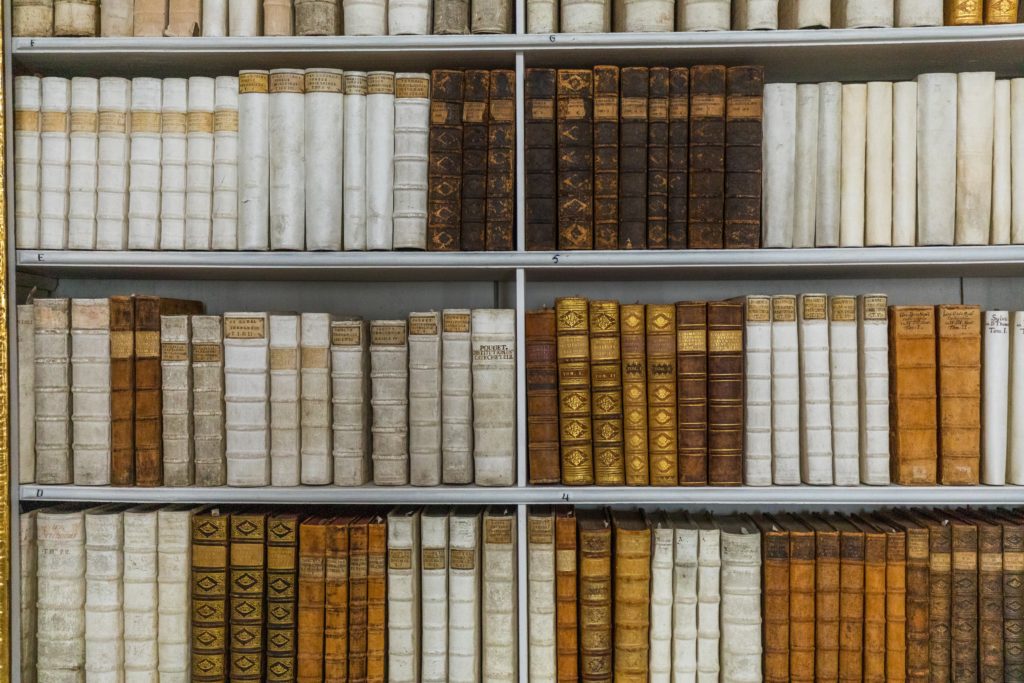
History major Autumn Balamucki (’21) began research with the Joint Archives this summer with Geoffrey Reynolds under abnormal circumstances. Because of the COVID-19 pandemic, she had to do almost all of her work remotely. With some creative solutions and a lot of hard work, Autumn managed to transcribe decades’ worth of meeting minutes of the United Spanish War Veterans of Holland and write a great article for the Joint Archives Quarterly.
Below is an excerpt of Autumn’s completed research project, The Trials of Transcriptions: A Look Into the United Spanish War Veterans of Holland, Michigan.
Tucked away in Centennial Park, under a small bush near the Veterans’ Monument, sits a medium-sized boulder with a faded bronze plate, lying in dedication to the Spanish-American War Veterans from 1898–1902. Simple block writing provides the only dedication to these veterans in Centennial Park—a small point of recognition, remembering the United Spanish War Veterans (USWV), and solidifying their place in Holland’s history. As a student intern for the Joint Archives of Holland, my first interaction with this stone slab occurred while reading through the meeting minutes of the United Spanish War Veterans Camp No. 38.
As a student at Hope College approaching my senior year, I found the existence of this memorial surprising. How had I lived in Holland, as a history major no less, and never come across it? My initial response was to make sure that this boulder still actually existed in Centennial Park. What surprised me most was not only that it did, but that finding photos or information on it was so difficult. The only proof I could find of its existence was a small passage in the Digital Holland segment on Centennial Park, briefly mentioning it under the War Memorials section. I mention this small memorial because, as I spent my summer studying the United Spanish War Veterans Camp No. 38 of Holland, I found that their history is very much like that of this boulder—a little tucked away and hidden, but still buried in the heart of Holland.
My journey with the USWV and the Joint Archives began in January of this year, when Professor Petit of the history department at Hope College put me in contact with Geoffrey Reynolds, the Mary Riepma Ross Director of the Joint Archives of Holland, regarding a potential summer internship. At the end of the previous semester, I had briefly expressed my interest to Professor Petit in finding an opportunity to gain experience in my field over the summer, as the next year would be my last at Hope. This opportunity through the Joint Archives seemingly came out of nowhere for me, and I was as surprised as I was excited when it did. And although I had no idea what to expect, I jumped at the opportunity to work in Holland over the summer.
However, as we now know, plans shifted a bit for everyone when the COVID-19 pandemic hit the United States, and my story is no different. It began in March earlier this year, when I was eating chifa (a Peruvian take on Chinese food) with two of my fellow students at a small restaurant on the Calle Marcavalle in Cuzco, Peru, about a month into my study-abroad term. The COVID19 scare hadn’t struck Peru with the persistence that it had the United States yet, but most of my group still harbored concerns that our program would send us home in the coming months, especially if the case count elevated. On that day in March 2020, Cuzco had just reported its first two positive cases of the virus (tourists no less), while Michigan’s numbers were quickly elevating. Rather than book an international flight home, it would have been safer to stay there, right? That was our line of thought anyway.
Sitting in that restaurant, the three of us experienced one of those moments where all eyes are drawn to the news playing on the television, and, looking around, you slowly realize that everyone else, employee and customer alike, is watching as intently as you are. As the screen showed the words “FRONTERA CERRADA” (“BORDER CLOSED”) during the Peruvian president’s speech, each of us met each other’s eyes with confused shock on our faces and thought, “Well, what now?”
For the full article, check out the Joint Archives Quarterly page here.
